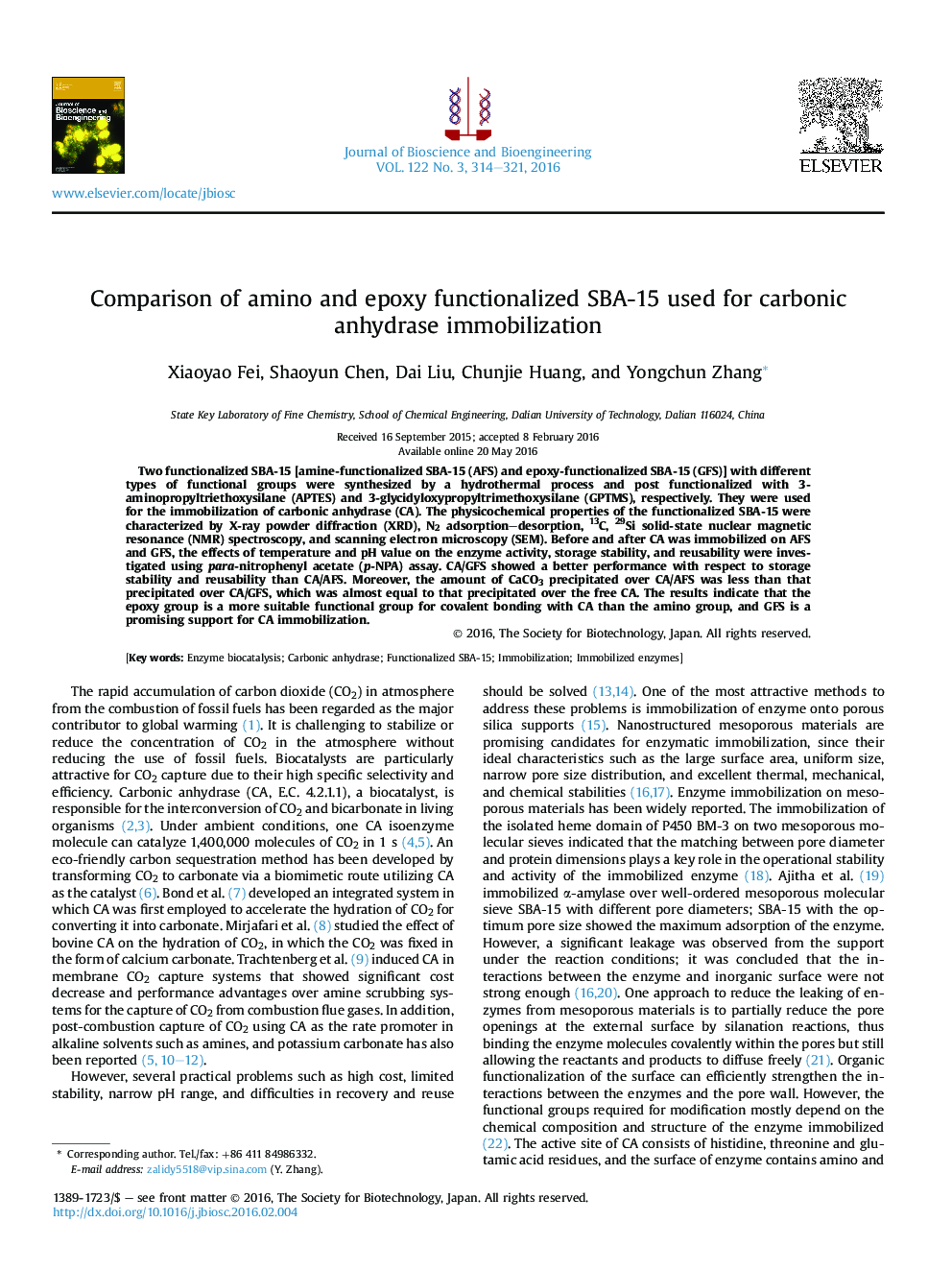| Article ID | Journal | Published Year | Pages | File Type |
|---|---|---|---|---|
| 19961 | Journal of Bioscience and Bioengineering | 2016 | 8 Pages |
Two functionalized SBA-15 [amine-functionalized SBA-15 (AFS) and epoxy-functionalized SBA-15 (GFS)] with different types of functional groups were synthesized by a hydrothermal process and post functionalized with 3-aminopropyltriethoxysilane (APTES) and 3-glycidyloxypropyltrimethoxysilane (GPTMS), respectively. They were used for the immobilization of carbonic anhydrase (CA). The physicochemical properties of the functionalized SBA-15 were characterized by X-ray powder diffraction (XRD), N2 adsorption–desorption, 13C, 29Si solid-state nuclear magnetic resonance (NMR) spectroscopy, and scanning electron microscopy (SEM). Before and after CA was immobilized on AFS and GFS, the effects of temperature and pH value on the enzyme activity, storage stability, and reusability were investigated using para-nitrophenyl acetate (p-NPA) assay. CA/GFS showed a better performance with respect to storage stability and reusability than CA/AFS. Moreover, the amount of CaCO3 precipitated over CA/AFS was less than that precipitated over CA/GFS, which was almost equal to that precipitated over the free CA. The results indicate that the epoxy group is a more suitable functional group for covalent bonding with CA than the amino group, and GFS is a promising support for CA immobilization.
